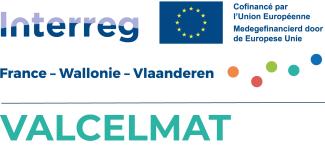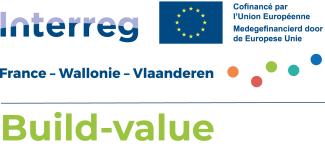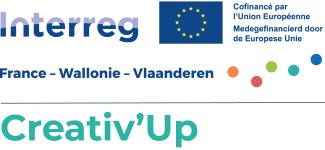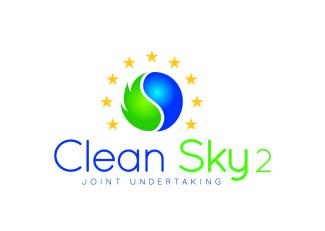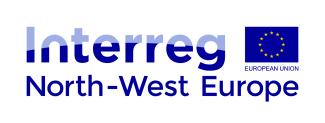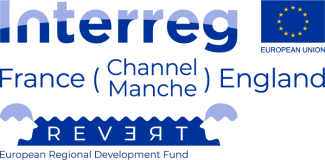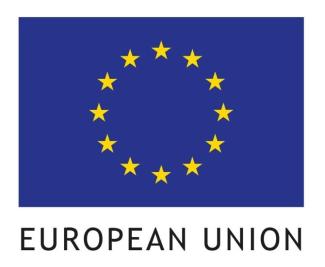STARWARS - STormwAteR and WastewAteR networkS heterogeneous data AI-driven management
→ Site web : https://cordis.europa.eu/project/id/101086252/fr
|
|
HORIZON-MSCA-2021-SE-01
Du 01/01/2023 au 31/12/2026
Projet porté par Centre National de la Recheche Scientifique CNRS
Public and private stakeholders of the wastewater and stormwater sectors are increasingly faced with large quantities and multiple sources of information/data of different nature: databases of factual data, geographical data, various types of images, digital and analogue maps, intervention reports, incomplete and imprecise data (on locations and the geometric features of networks), evolving and conflicting data (from different eras and sources), etc. Obtaining accurate and updated information on the underground wastewater and stormwater networks is a challenge and a cumbersome task, especially in cities undergoing urban expansion. Within this context, the main objective of this multidisciplinary project, STARWARS (STormwAteR and WastewAteR networkS heterogeneous data AI-driven management), is to address this challenge by providing novel proposals for the management of heterogeneous data in stormwater and wastewater networks. The STARWARS project aims to bring together researchers from the AI and Water Sciences communities in order to enhance the emergence of new practical solutions for representing, managing, modelling, merging, completing, reasoning, explaining and query answering over data of different forms pertaining to stormwater and wastewater networks. The project is implemented through five work packages (WP). The first four WP concern research developments of new AI methodologies for managing heterogeneous stormwater and wastewater networks’ data. The fifth WP is dedicated to project management and dissemination activities. The second objective of the project is to produce new knowledge and to promote knowledge exchange, with a strong will and a plan to encourage knowledge sharing between the researchers involved in this STARWARS project. The scheduled secondment plan is designed with the aim of maximizing knowledge transfer and training between the two fields of Water Sciences and AI and thus facilitating the achievement of the project objectives.
MOSAIC - Multi-site application of Open Science in the creAtion of healthy environments Involving local Communities
→ Site web : https://cordis.europa.eu/project/id/101137398/fr
|
|
HORIZON-HLTH-2023-ENVHLTH-02
Du 01/01/2024 au 31/12/2027
Projet porté par l'Institut de Recherche pour le Développement (IRD)
Planetary health requires a better understanding of the reciprocal negative effects and co-benefits between environmental changes, degradations and human health. This holds at all levels. Local communities of low- and medium-income countries, living in crossborder zones, face both the negative effects of environmental changes and degradations, impacting their health and well being, and particular socio-political contexts that enhance their vulnerability. MOSAIC states that these populations can be best suited to interpretand exploit complex and multi-thematic information about their surroundings, in order to identify and understand the impacts of the environment on their wellbeing and to develop locally feasible, acceptable, and sustainable adaptation and mitigation solutions. However, usually, access to information is weak and local communities do not necessarily have the required scientific literacy skills to fully benefit from it. MOSAIC aims to design and implement open, multimodal and replicable information ecosystems intended to support crossborder communities to i) understand the impacts of the environment on their well-being, ii) build a health-promoting environment, iii) influence public debate, public policies and public decisions. It relies on the Open Science principles, making: i) participatory and data sciences work together, with multiple disciplines and stakeholders, ii) scientists and society co-produce and make use of data and knowledge, with shared values. It will consider two bio-regions particularly affected by climate change, extreme climatic events, and land cover degradation, East Africa and the Amazon, with three cross-border study areas as “laboratory sites”. These study sites allow for implementation and evaluation of project developments, the testing of the reproducibility and reusability of methods, data and tools, and the facilitation of inter- and transdisciplinarity through the joint mobilisation of a multidisciplinary team.
VALCELMAT - Fonctionnalisation des substrats et fibres cellulosiques pour obtention de nouveaux matériaux
Programme Interreg France-Wallonie-Vlaanderen
Du 01/01/2024 au 31/12/2028
Projet porté par l’Université d'Artois
VALCELMAT vise via l’innovation et la recherche appliquée à soutenir les entreprises, la croissance et la relance de l’activité économique. Ce projet est en adéquation avec les demandes des consommateurs et par conséquent des acteurs économiques. L'objectif principal est de concevoir à l'échelle pilote de nouveaux matériaux qui pourront alors être de nouveaux modes de packaging, textiles et matériaux composites plus écoresponsables. Cette philosophie s'accompagnant bien évidemment d'une démarche non seulement écoresponsable mais également sociétale. Du point de vue scientifique, le projet VALCELMAT vise à valoriser la cellulose, l'un des polysaccharides le plus abondant et renouvelable sur la planète dans de nouvelles applications comme les emballages, les textiles et les additifs pour les bioplastiques et les biocomposites au sens large. La cellulose, extraite facilement et à moindre cout de la biomasse végétale, sera modifiée de façon écoresponsable par des procédés de chimie durable ou par voie enzymatique, pour lui conférer de nouvelles fonctionnalités (barrière aux micro-organismes, barrière aux gaz, résistance à l'humidité et au feu) tout en conservant ses propriétés intrinsèques (absence de toxicité et biodégradation). Les modifications seront effectuées via des procédés innovants, respectueux de l’ environnement, en batch et continus par extrusion réactive notamment avec toujours la notion d'extrapolation d'échelle pour des applications de marché. Les bénéficiaires après ce projet seront des entités du monde papetier, textile et plastique, donc des champs d'applications diversifiés ce qui laisse entrevoir des développements économiques pour les territoires du fait de la présence de ce type d'industries dans la zone d'impact de VALCELMAT.
Notre approche demande des interconnexions de différentes compétences tant humaines que matérielles. Pour mener à terme ce projet, nous avons donc mis en place un consortium de partenaires académiques, industriels ou institutionnels répartis géographiquement sur l'ensemble de la zone d'impact du programme. L'historique de certains partenaires ayant déjà collaboré entre eux a été un plus pour développer notre consortium. Ainsi nous nous retrouvons au final avec des entités qui se "connaissent". De plus, certains partenaires tels que par exemple UArtois et MaNo ont déjà collaboré dans un programme INTERREG FWF achevé en 2019. UGent et MaNo ont également collaboré dans le cadre d'un projet financé par INTERREG FWVl, qui s'est achevé en 2022.
L'aspect innovant de notre projet VALCELMAT par les différents matériaux visés par introduction ou enduction de composés biosourcés modifiés est un plus. En effet, ici plusieurs marchés sont ciblés et nous ne souhaitons pas concevoir un produit pour un domaine et un seul, mais concevoir des composés analogues homologues pour ainsi viser plusieurs applications. Le coté applicatif de notre projet est un élément essentiel, et nous gardons constamment à l'esprit la possibilité et l'obligation de pouvoir produire à plus grande échelle.
Build-value - Valoriser le secteur de la construction en favorisant l’utilisation de matériaux à faible impact environnemental pour réussir la décarbonation.
Programme Interreg France-Wallonie-Vlaanderen
Du 01/01/2024 au 31/12/2028
Projet porté par Cluster Eco-construction asbl
Le déploiement massif et structurel des écomatériaux dans la construction-rénovation nécessite de surmonter plusieurs obstacles actuels. Les décideurs publics cherchant à réduire leur impact environnemental manquent d'un recensement complet des acteurs et solutions disponibles sur le
territoire. De plus, la communication entre prescripteurs publics et entrepreneurs en écoconstruction est souvent limitée. Pour ces derniers, la certification des matériaux naturels est coûteuse et complexe en Belgique et en France. Enfin, ils n’ont pas toujours l’occasion de présenter leurs innovations au monde académique. Pour résoudre ces problèmes, le projet se déploie à trois niveaux:
Le premier pose les bases techniques et scientifiques. En caractérisant et en évaluant les écomatériaux. Build-Value a la volonté de conscientiser le secteur de la construction conventionnel à la valeur ajoutée d’utiliser des matériaux naturels et des solutions éco-construites. Ils seront étudiés en laboratoire et in-situ. Les méthodes d’essai seront confrontées afin de produire une information identique pour chaque catégorie de matériaux étudiée de part et d’autre des régions. Les évaluations techniques obtenues pour faciliter l’assurabilité des matériaux seront comparées afin d’aider les entreprises à optimiser les coûts et les démarches pour l’obtention des agréments nécessaires pour le marché transfrontalier. L’éco-conception sera étudiée en incluant l’analyse du cycle de vie, l’
identification des principes de conception et des données environnementales, l’estimation de l’ énergie grise, le coût environnemental global et la prise en compte du stockage carbone. Et enfin, les matériaux seront testés en laboratoire et in situ, en fonction des saisons, de la température et de l’
humidité.
Le deuxième vise à rendre l’utilisation des éco-matériaux désirable. Par ses actions de formation et d’orientation, le projet favorise la collaboration entre entrepreneurs, le monde académique et les pouvoirs publics. La formation des pouvoirs locaux, des étudiants des filières professionnelles se
fera au travers de sessions documentées. L’accès à la commande publique sera facilité grâce à des actions ciblées telles qu’une veille sur les avis de marché et un clausier juridiquement validé. L’organisation de sessions d’information sur les incitants à la rénovation énergétique et les labels
encouragent les pratiques de construction plus respectueuses. Pour terminer, des visites d’entreprises et de chantiers exemplaires seront organisées afin de mieux faire comprendre l’intérêt des éco-matériaux.
Le troisième à la volonté de changer les habitudes. En accompagnant et en actionnant les publicscibles, Build-value met en place une stratégie pour que les écomatériaux deviennent la norme dans les modes constructifs. L’organisation de rencontres intersectorielles, B2B, B2G, académiques stimulera l’adhésion. Les entreprises bénéficieront d’accompagnements collectifs et individuels notamment sur l’échelle de performance CO2.
Voici les éléments clés développés par Build-Value pour réussir cette transformation vers une construction décarbonée :
- Répertoire des écomatériaux
- Cartographie de la chaîne de valeur, de la source des matières premières, des fabricants d’écomatériaux,
- des distributeurs et des entrepreneurs en éco-construction sur l’ensemble de la zone
- géographique couverte par le territoire Interreg FRWVL.
- Ensemble de fiches techniques reprenant les caractéristiques, propriétés, applications
- possibles et conseil de mise en oeuvre par type d’écomatériau .
- Guide à destination des fabricants de matériaux des 3 régions pour l’obtention d’évaluations
- techniques afin d’établir une stratégie de déploiement transfrontalier de leurs produits et solutions.
- Guide d’Analyse du Cycle de Vie et d’éco-conception de constructions bio et géosourcées.
- Support de formation avec déroulé et livret du formateur,
- Mallette d’éco-matériaux comprenant des échantillons et des fiches,
- Démonstrateur mobile de l’éco-construction comprenant des écorchés, des panneaux
- explicatifs,
- Webinaires de valorisation des contenus,
- Réalisation d’un guide des bonnes pratiques et clauses pour des marchés publics durables,
- Outil de veille permettant le recensement des appels d'offres en lien avec l’utilisation des écomatériaux
- (marchés de fourniture ou de travaux),
- Inventaire reprenant l’ensemble des incitants (primes, déductions fiscales, prêts, etc.) existant
- sur les trois versants ainsi que les labels existants,
- Brochures de documentation récapitulative des endroits visités (entreprises, chantiers,
- bâtiments exemplaires).
La mutualisation des expériences, la caractérisation des matériaux, et l'implication des acteurs locaux contribueront à l'objectif de déploiement massif de l'écoconstruction d'ici 2050. Ce projet est essentiel pour surmonter les obstacles et atteindre ces objectifs ambitieux.
Créativ'Up - le hub transfrontalier pour les ICC
Programme Interreg France-Wallonie-Vlaanderen
Du 01/06/2024 au 30/05/2028
Projet porté par l’Université de Mons
Le secteur culturel et créatif est celui qui a été le plus durement touché par la crise COVID-19. La fragmentation du secteur a entraîné des ajustements et des innovations à des vitesses différentes, créant un déséquilibre structurel. Une collaboration transfrontalière dans ce secteur à fort potentiel est une source d’opportunités permettant de faire émerger une dynamique de développement territorial. Les Industries Culturelles et Créatives (ICC) jouent par ailleurs, un rôle crucial sur le plan économique, culturel et social. C’est un secteur à fort potentiel pour la relance économique, qui est également essentiel dans la valorisation d’un territoire et un puissant relais vers la population qui le compose. A ce titre, le secteur pourrait endosser un rôle d’accélérateur majeur de l’action sociale, sociétale et des transitions environnementales et numériques dans la zone. Pour ce faire, il faut permettre au secteur, morcelé et souvent composé d’indépendants/TPE en concurrence avec de grandes plateformes, d’atteindre une taille critique en lui donnant la capacité d'innover.
Creativ’ Up se présente alors comme une solution pour répondre à ces défis. Le projet s’attaquera, par une réponse structurée, aux défis d’accompagnement de l’innovation qu’elle soit sociale, d’usage ou technologique et de soutien aux transitions des ICC. En combinant des approches top-down et bottom-up, et en promouvant une collaboration transfrontalière, le projet vise à unir les forces des régions pour relever les défis communs du secteur des ICC et permettre aux ICC de la zone, d'actionner et d’amplifier leur capacité d’innovation.
Dans le cadre d'une démarche innovante et transfrontalière, plusieurs activités majeures ont été mises en place pour stimuler la recherche et développement dans le secteur des ICC mais aussi des actions de montée en compétences entrepreneuriales. Les activités proposées permettent d’associer les compétences, bonnes pratiques, spécificités culturelles et technologiques des régions et de soutenir la transformation (numérique, responsable, et /ou d’usage) des ICC.
La première activité se concentre sur l'inspiration et la mise en réseau, organisant des moments d'échange entre pairs, des voyages d'inspiration pour exposer les entreprises à des pratiques novatrices. De plus, des ateliers professionnels thématiques sont mis en place pour approfondir la compréhension et l'application des thématiques d'innovation. L’objectif de ses activités est d’inspirer, stimuler l’écosystème transfrontalier pour à terme, essaimer des projets et des initiatives innovantes pour les ICC sur le territoire transfrontalier. La deuxième activité adopte une approche plus collaborative, en élaborant trois projets pilotes transfrontaliers pour répondre à des défis spécifiques du secteur des ICC. L’accent sera alors mis sur l'innovation technologique, en particulier l’IA et les
technologies immersives, la blockchain dans les processus créatifs, … mais aussi la transformation des modèles économiques (propriété intellectuelle, nouveaux business modèles), l’accessibilité des technologies, les questions sur la durabilité et les technologies, le rôle des artistes/créateurs dans l’analyse des impacts sociétaux des technologies et dans la transformation des usages, etc. La troisième activité privilégie une démarche ascendante, soutenant directement des projets par le biais d'appels à projets et offrant un accompagnement pluridisciplinaire pour développer de nouveaux produits ou services innovants en lien avec les transitions numérique et d’usage.
En tout, 105 entreprises bénéficieront directement de ces initiatives et le secteur dans sa globalité pourra bénéficier des résultats du projet grâce aux actions de dissémination mises en oeuvre par les partenaires du projet. Des actions de valorisation et de dissémination des résultats du projet seront
organisées valorisant les réalisations conjointes et la collaboration transfrontalière.
La collaboration transfrontalière, telle qu’incarnée par Creativ’Up, est essentielle pour maximiser le potentiel du secteur des ICC. Dans un espace où les régions de la zone partagent des problématiques, des patrimoines culturels et des ambitions similaires, travailler conjointement devient une opportunité d'amplification. Chaque région, avec ses atouts spécifiques peut bénéficier des compétences et innovations des autres. Par cette collaboration, Creativ’Up aspire à créer un écosystème transfrontalier vibrant, où le partage de connaissances, d'équipements et d'expertises peut catalyser une dynamique de développement territorial. Dans le sillage de la crise COVID-19, une telle approche transfrontalière offre une plateforme résiliente pour redynamiser le secteur des Industries Culturelles et Créatives, favorisant l'émergence de projets innovants répondant aux besoins des bénéficiaires du projet sur la zone transfrontalière.
Le projet SOCORRO (Seeking out corrosion - before it is too late)
→ Site web : https://www.interreg2seas.eu/fr/SOCORRO
Programme Interreg 2 Mers
Du 01/03/2020 au 30/09/2022
Projet porté par Antwerp Maritime Academy (AMA)
This project aims to provide companies with an independent means to assess the corrosion risks in their installations, to increase their awareness and to have them take appropriate preventive actions. To this end, we created a simple, rapid, in situ sensor system able to monitor a range of environmental markers over time to determine the risk of corrosion of steel submerged in water, as well as a statistical method to mine these data for an overall corrosion risk estimate – in short, the SOCORRO system, set at TRL 4.
In this project, we will implement and demonstrate this whole set-up in several industrial case studies (wind turbines at sea, water desalination/sanitation, ship’s hulls and ballast tanks, harbour sheet piles, process water) and show the economic opportunities. In addition, we will augment the statistical analysis with an intuitive, practical dashboard tool to present the outflow of information and to convey that risk to the end users. This will raise the TRL to 6 or 7.
Le projet HAIRE (Healthy Ageing Through Innovation in Rural Europe)
→ Site web : https://www.interreg2seas.eu/fr/HAIRE
Programme Interreg 2 Mers
Du 01/01/2020 au 30/09/2022
Projet porté par l’Université d’Exeter
Rural communities in the 2Seas area are at risk of dying out: their populations are ageing and poor public transport, lack of local support and facilities, out-migration of young people, reduced services, isolation and fragmented health and social care systems all negatively impact the health and wellbeing of older people (1). The numbers of elderly (aged 60+) will double in the next 30 years in the 2Seas area (2, 3). The common societal challenge for the 2Seas area is managing the needs of the ageing population whilst encouraging healthy ageing and realising the potential of older people, which has been overlooked (4). The benefits of healthy ageing are felt by individuals, communities and service providers (5, 6). However, little has been done to empower and enable older people to define the support they need, participate in the design and delivery of services, and develop solutions for themselves with the support of the voluntary, public and private sectors.
Le projet VILB (Very high temperature HVDC busbar (180-240°) with reliable and cost effective technology)
|
|
→ Site web : https://cordis.europa.eu/project/id/821065
Programme Horizon 2020 – Cleansky (appel : H2020-CS2-CFP07-2017-02)
Du 01/11/2018 au 31/10/2020
Projet porté par l’entreprise Auxel (France)
More Electrical Aircraft power distribution systems are increasingly required to operate in harsh environments and increasing voltage (HVDC), including high temperature. The company Auxel (an industrial leader in laminated busbars) & the LSEE Research Laboratory (Electrotechnical Systems and Environment) will conjointly address this topic by developing a technology able to effectively address the challenges of High Voltage, high operating temperature (up to 240°) and controlled lifetime: VILB (Varnished & Impregnated Laminated Busbar) technology. Firstly, VILB is a technological breakthrough as it is based on an entirely new strategy for the insulation of laminated busbars (LBB) (one component of the power distribution systems). Indeed, VILB will replace insulating films, glue and complex assembly processes by a heating press with an impregnation technology using a dielectric resin. This process will make the LBB resistant to higher temperatures (240°) and partial discharge (tiny short circuits appearing during the insulation phase and accelerating the system ageing). Secondly, VILB is a limited risk taking technology as it is inspired by perfectly mature technologies and products widely used for the insulation of electric machines. Thirdly, the potential VILB impacts are way beyond aeronautical sector: VILB could be duplicated in many other applications such as power modules, converters, automotive Industry, etc. Finally, thanks to this simplified process, in comparison with the traditional thermally bonded insulating film on heating press process, the implementation of VILB technology for busbars will result in higher productivity (x 5), lower production costs (from - 10% to - 30%) and energy savings (- 80%). During the project, the busbar will be designed, its performance simulated, the prototypes tested to TRL6 demonstration ending with a “TRL 7 ready” prototype. AUXEL and the LSEE have already co-patented VILB with 2 patent pending applications.
Le projet NANOSTEM (New nanomaterials for neural stem cells drug delivery)
→ Site web : https://cordis.europa.eu/project/id/764958
→ Site web : https://www.nanostem.qmul.ac.uk/
Programme Horizon 2020 –
Actions Marie Sklodowska Curie – Innovative Training Networks
Du 01/06/2018 au 31/06/2022
Projet porté par la Queen Mary University of London
Brain conditions such as neurodegenerative diseases, stroke and traumatic injuries are a mayor burden in modern society. Because neural stem cells (NSCs) can differentiate into new neural cells including neurons, the regulation of their proliferation, differentiation and migration represent a promising regenerative/therapeutic strategy. The hypothesis of NanoStem project is that novel nanoparticles (NPs) combined with recent identified/developed pharmaceuticals can be an efficient approach to control the biological activity of NSCs. The scientific project is organized in three work packages (WP), each focusing on specific objectives and containing well-defined deliverables. WP1 will focus on the synthesis of the nanomaterials and the uploading of the therapeutics. WP2 will take the best nanoparticles and focus more on the evaluation of the permeation and efficacy of the formulations against NSCs. WP3 will focus on in vivo studies to evaluate the formulations developed to tackle the brain and to assess their toxicity. The project will train 14 ESRs in areas including organic and polymer chemistry, cell biology, pharmacology, neuroscience, nanobiotechnology and clinical sciences. The project will also provide a substantial training program in complementary skills, targeting both professional and personal development, and translation of research and entrepreneurship. The project brings together six academic partners, one hospital and two industrial teams as full partners, complemented by four associate partners, one of which is an industrial team, distributed over a total of seven European Union member states. The consortium brings together groups with a very interdisciplinary expertise ranging from nanoparticle synthesis and characterization, computational modeling, in vitro BBB models and BBB transport, neural stem cells, animal testing and clinical expertise.
Le projet in3 (An integrated interdisciplinary approach to animal-free chemical and nanomaterial safety assessment)
→ Site web : https://cordis.europa.eu/project/id/721975
→ Site web : https://www.estiv.org/in3/
Programme Horizon 2020 – Actions Marie Sklodowska Curie – Innovative Training Networks
Du 01/01/2017 au 31/12/2020
Projet porté par Stichting VU
All chemicals whether they are drugs, cosmetics, agrochemicals or others need to be tested for their safety to man and the environment. The use of whole animal studies for the prediction of adverse effects in man, is problematic due to species dependent effects, high costs and a large burden to animals in terms of numbers and suffering. While there have been major improvements in human in vitro and in silico techniques, there is still a lack of an integrated risk assessment platform. The in3 proposal aims to significantly further the development of animal-free chemical and nanomaterial (NM) safety evaluation by creating a scientific and training program aimed at integrating human in vitro testing with computational approaches. The project will focus on human induced pluripotent stem cells (hiPSC) derived tissues, including liver, kidney, brain, lung and vasculature and to utilise mechanistic toxicology, quantitative adverse outcome pathways, biokinetics, cheminformatics and modelling approaches to derive testable prediction models. hiPSC present the major advantages provide non-cancerous derived tissues with identical genetic backgrounds. All Early Stage Researchers (ESRs) will work towards the same goal, utilising the same chemicals, donor cells, assays and software packages. All data will be centrally housed in standardised formats, appropriately annotated and linked with protocols and material information. While ESRs will hone their skills in their own field of expertise, they will also collaborate to create an in depth safety evaluation testing platform for the chosen test compounds. By interaction, problem solving, training and secondments over the three years, they will acquire a unique set of interdisciplinary skills for chemical and NM safety assessment. The project aims to accelerate the realisation of animal-free safety assessment and to graduate 15 PhD students with the ideal skill sets to carry out the strategy designed in in3 in the near future.
Le projet BIOSCREEN (Nouvelle molécules biosourcées et multifonctionnelles pour le biocontrôle des agents phytopathogènes des cultures de la région transfrontalière)
→ Site web : http://www.smartbiocontrol.eu/fr/projet-bioscreen/
Programme France Wallonie Flandres
Du 01/01/2016 au 31/12/2020
Projet porté par l’Université de Reims Champagne-Ardenne
L'utilisation de produits phytosanitaires conventionnels de synthèse en agriculture engendre une dégradation de la qualité des eaux et de l'air et possède des impacts reconnus sur la biodiversité et la santé humaine. Qui plus est, l'absence de produits biosourcés disponibles est souvent un obstacle à la mise de place de l'agro-écologie ou à la transition agriculture conventionnelle/agriculture durable.
Afin de répondre à une demande croissante pour le développement d'une agriculture durable respectueuse de l'environnement sur la région transfrontalière, le projet BioScreen vise donc à rechercher et identifier de nouvelles molécules d'origine biologique et multifonctionnelles pour le biocontrôle des agents phytopathogènes des cultures de la région transfrontalière. Ce projet s'appuie sur un consortium transfrontalier reconnu pour son efficacité et sa complémentarité (élaboré dans le cadre du projet PHYTOBIO, élu projet stratégique INTERREG IV en 2013), renforcé par de nouveaux partenaires privés et académiques aux expertises complémentaires.
Le projet BTRAIN (Brain barriers training)
→ Site web : https://cordis.europa.eu/project/id/675619
→ Site web : https://www.btrain-2020.eu/
Programme Horizon 2020 – Actions Marie Sklodowska Curie – Innovative Training Networks
Du 01/09/2015 – 31/08/2019
Projet porté par l’Université de Berne
The brain barriers function to protect the central nervous system (CNS) from neurotoxic compounds. By the same traits they unfortunately block delivery of drugs to the CNS thus hindering proper diagnosis and effective treatment of neurological disorders including Alzheimer’s disease and multiple sclerosis. The unusual complexity of the brain barriers has severely hampered progress in the market of CNS targeting therapeutics. BtRAIN bridges this gap by creating particular knowledge on vertebrate brain barrier signature genes and their specific roles in regulating brain barrier function in development, health, ageing and disease. Brain barrier signature genes will be identified by combining cross-species and cross-system brain barrier transcriptome analysis with dedicated bioinformatics. These data will be made available for brain barrier datamining in the userfriendly online platform BBBHub. Within BtRAIN, the side-by-side comparison of a unique and broad armamentarium of different vertebrate in vitro and in vivo brain barrier models will allow to develop and validate particular in vitro brain barrier models that are suited to reliably predict brain barrier function in vivo. Combined with an accompanying in depth analysis of the pathological alterations of the brain barriers during neurological disorders BtRAIN will create unique knowledge to overcome the unmet need for the development of diagnostic and therapeutic tools able to breach the brain barriers. In BtRAIN 12 academic, 6 non-academic partners and 1 European network will jointly train young researchers at unique interfaces of brain barrier research, bioinformatics, business development and science communication for an international research or entrepreneur career. To create this expert pool is the motivation for the involved partners as it will advance the Euopean capacity to bring innovative approaches to the untapped potential of the CNS therapeutic market.
Le projet AniAge (High Dimensional Heterogeneous Data based Animation Techniques for Southeast Asian Intangible Cultural Heritage Digital Content)
→ Site web : https://www.euh2020aniage.org/
Prorgramme Horizon 2020 – Actions Marie Sklodowska Curie – Research and Innovative Staff Exchanges
Du 01/01/2016 au 31/12/2019
Projet porté par Fern Barrow Bournemouth University
"Although computer animation technology has been extensively used for films and games, it remains largely labour-intensive and expensive, with recent blockbuster films (e.g. Avatar, Gravity) costing around $1 million per minute of footage. A lot of research efforts and technological breakthroughs are therefore necessary if it is to be widely applied to many low-cost applications, such as archiving and reproducing style-preserved intangible cultural heritage (ICH) contents. The project “AniAge” is designed to answer this very challenge, using Southeast Asian ICH as the main application. Southeast Asian ICHs, e.g. local dances and puppetry, are visually and culturally rich, but are unfortunately disappearing due to the globalized modernization. The overall aim of ""AniAge"" is two-fold. The first is to develop novel techniques and tools to reduce the production costs and improve the level of automation without sacrificing the control of the artists, in order to preserve the performing art related ICHs of Southeast Asia. This involves capturing and processing versatile visual performance data, which are heterogeneous in nature and gigantic in quantity. Two areas of technological innovation are aimed to be made, which are novel algorithms for 3D computer animation; and visual asset management with data analytics and machine learning techniques. The second is to promote knowledge exchange and dissemination between EU and Southeast Asian partners, with a view to fostering researchers and spreading knowledge. This will be achieved by having researchers participating in the well-designed research projects, workshops, seminars and open lectures. This consortium consists of six partners, two from the EU and four from Southeast Asia. Four work packages are designed, three for technological developments (digitalizing traditional performing arts - ""DigAge"", digital asset management - ""ManD"" and stylized animation production - ""AniX"") and one for dissemination (""Dissem"")."
HI-ECOWIRE (High quality ecoefficient magnet wire)
→ Site web : https://www.nweurope.eu/
Programme Interreg North West Europe / Europe du Nord-Ouest
Du 01/04/2020 au 30/09/2023
Projet porté par MATERIA NOVA
Enameled copper wire (annual production of 120 000 tons in NWE) is used for transformers and electric motors. Materials technologies are facing increasing environmental challenges, productivity and competitiveness requiring a complete review of their production methods. Therefore, HI-ECOWIRE aims at developing a more sustainable and competitive production process with two main technical objectives: (i) Improve the energy performance and efficiency of electrical motors by 20% to 30 % compared to the current situation by increasing the thermal class from 240°C to 280/300°C; (ii) Replacing the current varnish by a polymer layer with higher thermal and dielectrical performances. This replacement is expected to lead to a reduction of solvent use by 90%. The current technology uses 12 000 tons/year of varnish with toxic solvents that must be burnt with high energy consumption during transport, storage and management. The consequent massive CO2 and NOX emissions are associated with security issues limiting this industrial activity. The replacement of the solvent-based varnish by polymer extrusion would thus not only help at reducing the solvent consumption and VOC emission but also allow possible creation of industrial activities in areas where it is currently not possible due to security and sanitary issues. The project is based on an international consortium (SMEs, Industries, Research Centers and Universities) aiming at strengthening European competitiveness in the transport sector and energy production (wind turbine) while reducing the carbon footprint and the use of CMR solvents. Starting from laboratory scale validated products (TRL 3) the project will optimize the new products and process and validate them at industrial scale reaching TRL 7/8 at the end of the project. Constant interactions with the industrial actors within and outside the consortium based on strong dissemination activities will be the key of success of the future technology transition.
TAILOR (Foundations of Trustworthy AI - Integrating Reasoning, Learning and Optimization)
→ Site web : https://cordis.europa.eu/project/id/952215/fr
|
|
→ Site web : https://liu.se/en/research/tailor/about
Horizon2020 -ICT-2018-20/ Horizon2020 -ICT-2019-3
Du 01/09/2020 au 31/08/2023
Projet porté par LINKOPINGS UNIVERSITET
Maximiser les opportunités et minimiser les risques associés à l’intelligence artificielle nécessite de se focaliser sur les IA fiables centrées sur l’humain. Cet objectif peut être atteint à travers des collaborations entre les centres de recherche d’excellence, en adoptant une approche technique sur l’association de l’expertise dans les domaines de l’apprentissage, de l’optimisation et du raisonnement. Ces travaux sont actuellement menés par une communauté scientifique isolée où des groupes de recherche travaillent individuellement ou dans des réseaux plus restreints. Le projet TAILOR (Foundations of Trustworthy AI - Integrating Reasoning, Learning and Optimization), financé par l’UE, vise à rassembler ces groupes pour former un réseau scientifique unique sur les fondements d’IA fiables, ce qui réduira la fragmentation et améliorera la capacité de recherche commune sur l’IA en Europe. Cela permettra à l’UE d’occuper une position dominante et de faire progresser l’état de l’art de l’IA fiable. Les quatre principaux instruments consistent en une feuille de route stratégique, un programme de recherche basique visant à répondre à des défis d’ampleur, un fond de connectivité pour la diffusion active des résultats, ainsi que des activités de collaboration du réseau.
REVERT (The reversible dementia project)
→ Site web : https://www.channelmanche.com/fr/
Programme transfrontalier Interreg France-Manche-Angleterre
Du 01/10/2020 au 30/06/2023
Projet porté par Université de Cambridge
La démence entraîne une dégénérescence progressive du cerveau. Cela a un impact considérable sur la qualité de vie des patients. La maladie réduit leur autonomie et peut conduire à une mort prématurée.
Le projet REVERT est axé sur une forme spécifique de démence appelée hydrocéphalie à pression normale (HPN. Elle touche principalement les personnes âgées. Contrairement à la plupart des types de démence, comme la maladie d'Alzheimer, l'hydrocéphalie peut être traitée, et potentiellement inversée.
La méthode actuelle consiste à implanter chirurgicalement un tube fin et flexible équipé d'une valve spéciale appelée shunt, qui draine l'excès de liquide céphalo-rachidien du cerveau vers une cavité appropriée du corps. Toutefois, ce traitement ne peut être appliqué sans discernement et seul un diagnostic précis permet de sélectionner les patients qui ont de bonnes chances de s'améliorer après la dérivation.
L'équipe REVERT, incluant des chercheurs de l'Université d'Artois (LML) spécialisés dans l'application de méthodes d'intelligence artificielle, met en place un réseau d'excellence afin de mettre en œuvre des outils médicaux innovants pour diagnostiquer rapidement et précisément les patients atteints d'hydrocéphalie à pression normale (HPN) dans le cadre d'un parcours de soins intégrés.
Le projet est cofinancé par le FEDER (Fonds européen de développement régional). Interreg France (Manche) Angleterre a alloué 2,4 millions d'euros au projet REVERT (tous les partenaires) sur un budget total de 3,5 millions d'euros délivré sur 33 mois.

